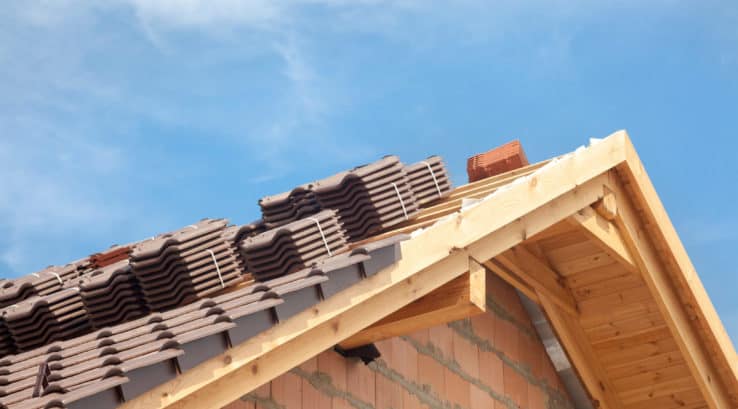Nothing gives your house a lift like a new roof — but when it comes to roofing materials, pros and cons abound. Some solutions look good for years but don’t stay watertight; others fade but provide good protection against inclement weather. Ideally, your new roof should look exceptional, breathe well, and keep the inside of your house dry.
In this article, we’ll explore the pros and cons of different roofing materials to help you choose a high-quality solution for your home. We’ll begin with a roofing rundown for 2020.
Different Types of Roofing Materials
As you think about the pros and cons of different roofing materials, consider how you want your house to look, what your existing trusses can handle, what you can afford, and what type of maintenance you’re willing to do. Let’s dive right into three popular roofing solutions:
GAF Shingles
GAF shingles have real street cred. A major industry player since 1886, GAF is the biggest roofing materials manufacturer in the USA. GAF shingles, including Timberline shingles, cover more homes than any other shingle brand. Why? Because they’re backed with a solid guarantee, they last up to 50 years, and they come in a broad range of hues.
Additional GAF shingle pros and cons include:
Pros
- Shingles are surprisingly affordable.
- Shingle installation is quick and simple.
- Excellent protection against rain, snow, and hail.
- Damaged shingles are easy to replace.
- High-quality GAF shingles last a lifetime — up to 50 years.
- Wide variety of colors to match your home.
- Huge range of styles available, including Timberline HDZ, Timberline AH, Slateline, Camelot II and Royal Sovereign.
Cons
- Shingles occasionally crack after many years of exposure to hot and cold.
- Lightweight shingles sometimes lift off in windy weather (high-quality heavyweight GAF shingles nearly always stay put).
- Asphalt shingles have a slightly shorter lifespan than slate tiles.
Metal Roofing
Many homeowners find it hard to compare the pros and cons of different roofing materials. Metal roofs are more popular than they used to be and have a reputation for longevity. But do they live up to the hype? Let’s see.
Metal roofing pros and cons include:
Pros
- Metal roofs are durable and last a long time.
- An eco-friendly option, metal roofs are recyclable.
- Some sustainable metal roofs are made of recycled materials.
- Metal roofs are energy efficient because they reflect solar radiant heat.
Cons
- Metal roofing isn’t cheap — installed, an average metal roof costs significantly more than an asphalt roof.
- Sheet metal roofs can be loud; the heavier the rain or hail, the more noise you hear.
- Falling branches and large hail can dent metal roofs, which are costly to repair.
- Metal roofs expand and contract, so the panels can loosen over time.
- It can be hard to get a color match on older metal roofing.
- If water collects anywhere, your metal roof can rust.
Slate Tiles
If you plan to invest in expensive roofing materials, pros and cons are an important consideration. Slate tiles are beautiful and give homes a classic look, but they’re pricey. Natural slate is also delicate, so if contractors working on roof-based projects put a foot wrong, they’re likely to damage your tiles.
Slate roofing pros and cons include:
Pros
- A long-used natural material, slate gives your house a classic look.
- A slate roof can increase the resale value of your home.
- Slate roofs are durable and last a long time — 100 years on average.
Cons
- If slate tiles fall, they can damage whatever they land upon.
- Slate is very heavy: Many homes don’t have the structural support to take the weight of a tile roof.
- Slate tiles are more expensive to replace than asphalt shingles.
- Repairing a broken slate roof can be tricky and expensive.
- Slate tiles don’t come in as wide a range of colors as shingles.
- Slate roofs take quite a while to install.
The Best Roofing Material for You
Shingle roofs are by far the most popular choice in America — for good reason. They’re smart; they’re beautiful, and they last decades when properly installed. If you’re sold on shingles and you’re ready to make a purchasing decision, don’t forget to add:
- A reliable attic vent system to ensure your roof can breathe.
- Robust ridge cap shingles to keep your home watertight.
- High-quality underlayment for an airtight and watertight finish.
As you think about roofing materials, the pros and cons of each type will probably factor into your final decision. To find out more about roofing options in your area or to book a free consultation with Thompson Creek, contact us today.


